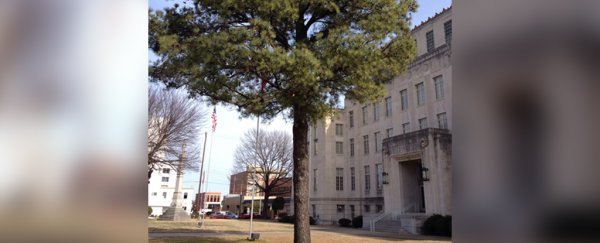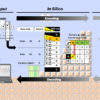Update (22 April 2021): Since we first wrote about the Moon Trees, interest in these wonderful living relics of the Apollo era has renewed. Now, the Royal Astronomical Society and the UK Space Agency have begun a quest to search for these trees across Britain.
According to a recent BBC Radio 4 program, around 15 of these trees were planted in the UK. However, any records of how the seeds may have arrived in the country are nowhere to be found.
“Space has a wonderful way of inspiring people. We saw that excitement when space saplings grown from the seeds from Newton’s apple tree were planted on our soil,” says space exploration expert Libby Jackson from the UK Space Agency.
“I’ll be interested in discovering if any of the Moon seeds came to the UK and what has become of them.”
To learn more about the Moon Trees, you can read our original article below.
Original (12 July 2019): On 31 January 1971, the Apollo 14 mission launched from Earth and spent nine days in space. Along with the necessary space gear, scientific equipment, and two golf balls, the Kitty Hawk command module was also housing 500 seeds.
You might be surprised to know that those seeds live on today, despite enduring space radiation, and a decontamination mishap.
In the 1970s people were taking all sorts of things to the Moon, and the Chief of the US Forest Service at the time contacted soon-to-be astronaut Stuart Roosa to propose sending something small but mighty into space: tree seeds.
Long before Roosa became an astronaut, he started his military career as a ‘smokejumper‘ – a specially trained firefighter who parachutes into remote terrain and fights wildland fires. Roosa wanted to pay tribute to the Forest Service, and so agreed to the request.
In Roosa’s personal travel kit when the rocket took off, he’d packed around 500 seeds from redwood, loblolly pine (Pinus taeda), American sycamore (Platanus occidentalis), Douglas fir (Pseudotsuga menziesii), and American sweet gum (Liquidambar styraciflua) trees.
As Roosa was the Command Module Pilot, he never actually made it down to the lunar surface, and neither did the seeds, but they did do 34 orbits of the Moon before heading home.
Once the three astronauts returned to Earth, the seeds (inside their canister) underwent the normal decontamination procedure, but the canister ruptured and the seeds were mixed together. At the time, it was thought they might be too damaged to germinate.
Luckily, researchers tried anyway, and found that most of the seeds did survive, and were planted at a number of locations across the US. There might even be one near you.
You can see a list of the ‘Moon tree’ locations here (they’re also mapped here), and it looks like they grew completely normally, with no observable differences when compared to their Earth-bound counterparts.
But that raises an interesting question: were the seeds actually any different after their journey into space?
We now know that cosmic radiation – the high-energy particles that we’re normally shielded against by our planet’s atmosphere – is a real issue out in space.
The astronauts on the Apollo missions were exposed to a number of different types of radiation, and that goes for the seeds as well.
But seeds are well-known to be extremely hardy – in fact, some seeds can undergo 200 times the radiation dose required to kill a human and still germinate.
There’s also the issue of a lack of gravity, and how that might have affected the seeds in space, but most research done on plants in microgravity are done on the plants themselves, not the seeds.
All in all, it’s unlikely the seeds were changed much by their brief stint in space, but it’s amazing they made it to space at all, and even better that many of the trees are still growing and flourishing today.
In fact, in a fitting tribute to Roosa – after his death in 1994 – a Moon sycamore was planted near his grave.



